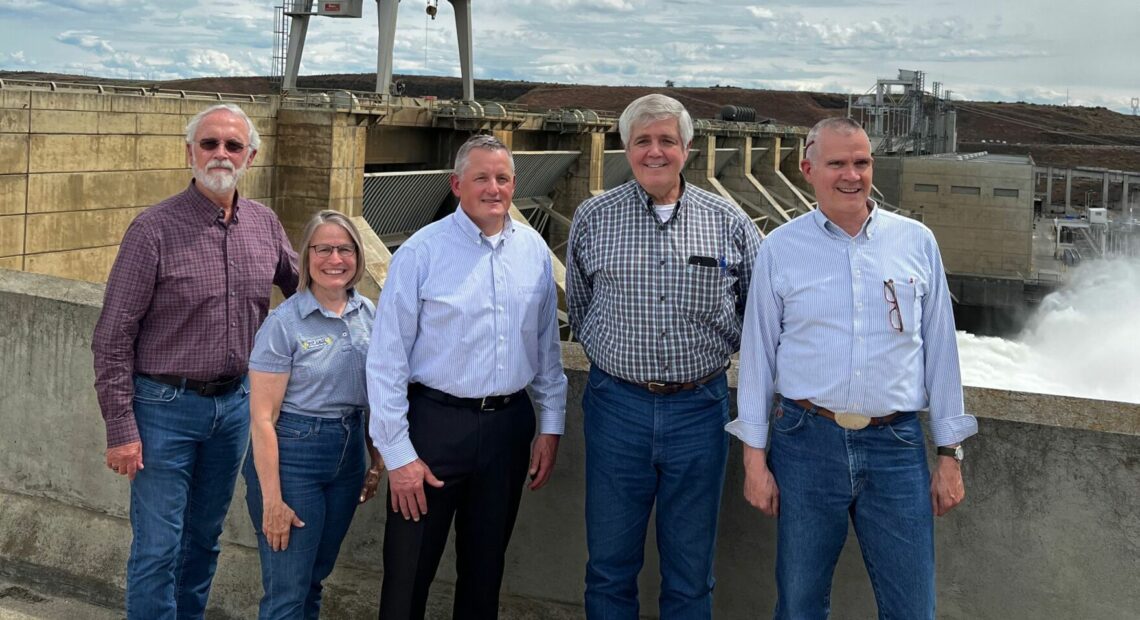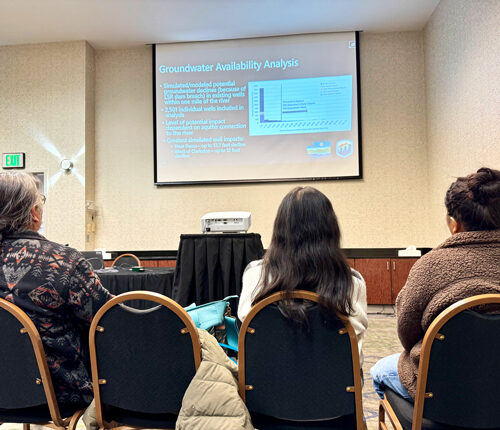
Members Of The Congressional Western Caucus Get A Close Look At Snake River Dams
Read
Four members of the U.S. Congress recently got a close look at Washington’s Snake River dams.
The four members of the Congressional Western Caucus, which Rep. Dan Newhouse, R-Washington, chairs, watched fish travel through various passage routes on Tuesday at Ice Harbor Dam on the Snake River. A boat tour also led them through the lock system near the Tri-Cities.
Reps. Bruce Westerman, R-Arkansas; Cliff Bentz, R-Oregon; Matt Rosendale, R-Montana; and Mariannette Miller-Meeks, R-Iowa, joined the tour.
Newhouse is an ardent supporter of the region’s hydropower system. He said taking other Congressional Republicans to the dam is part of his strategy to promote Washington.
Congress eventually could decide whether to approve a decision to remove or alter the four controversial Snake River dams, Newhouse said.
“The dams are under attack. I think the more members of Congress that can come and see first-hand exactly what’s involved when we talk about hydroelectric dams and the benefits that we derive from them – I think the better off that we are,” he said.
However, environmental groups and the Nez Perce Tribe continue to push to remove or alter the four dams in an effort to protect endangered salmon.
“Nothing has been more devastating to these species than four dams that impede a 140-mile section of their migration on the lower Snake River,” EarthJustice senior attorney Todd True wrote in a news release. “Scientists have said for years that breaching these dams is the single best thing we can do to restore these fish.”
But, Newhouse said more study is needed on court-ordered increases of spill over the tops of dams, which he said increases dissolved gasses in the water, posing a threat to fish. Moreover, he said the increased spill wastes potential energy.
“That could be running through the turbines to be generating power to drive our economy. The cost of energy is literally going through the roof. It’s really hard to watch all of that potential energy being literally wasted,” Newhouse said.
However, environmental groups said the increased spill helps young salmon migrate out to sea, calling increased spill a crucial protection for juvenile salmon.
“The science is clear and it has been for many years, spill increases the survival for out migrating juvenile fish. And while increased spill has been helpful, it remains insufficient if we want to back these fish and prevent extinction,” said Joseph Bogaard, executive director of Save Our Wild Salmon.
Related Stories:

Ocean conditions mixed for salmon, leading to average salmon returns
NOAA biologist Brian Burke says mixed ocean conditions may lead to average salmon runs, but climate change is disrupting ecosystems—making continued research critical.

Canadian leaders hope trade negotiations won’t derail Columbia River Treaty
A view of the Columbia River in British Columbia. The Columbia River Treaty is on “pause” while the Trump administration considers its policy options. However, recent comments by President Donald

Snake River water, recreation studies look at the river’s future
People listen to an introductory presentation on the water supply study findings at an open house-style meeting in Pasco. After they listened to the presentation, they could look at posters
















